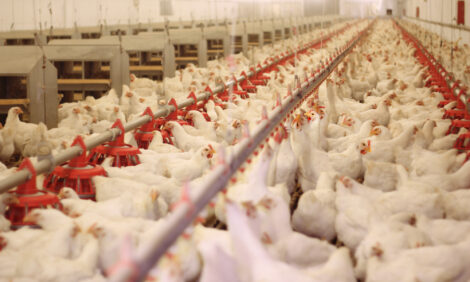



IPPE: ADM Animal Nutrition releases new research findings
Milan Hruby shares ADM research highlightsPart of Series:
< Previous Article in Series Next Article in Series >
Research about the modes of action of products and technologies was the spotlight of information ADM Animal Nutrition brought to IPPE 2022 last January. Milan Hruby, director of technical services, shared highlights with The Poultry Site’s Sarah Mikesell.
“What we are trying to do at IPPE is bring some of the research conducted by our science and technology team which is helping us to understand modes of actions of our products and technologies and really test it in the local conditions, to understand how maybe a specific feed management condition, maybe even the genetics of our birds are responding to the technologies we are offering in this market,” said Hruby.
Hruby added their presentations and papers look into some of the key issues ADM customers share with them, especially feed costs, which are 65 percent to 75 percent of production costs.
“If we can come in with the technologies which are improving the efficiency of using what we have, in the end it’s reducing production costs,” said Hruby. “To give you some examples, we have a range of extracts, or phytogenics, which people typically look at as essential oils. Do they do something in terms of nutrient digestibility improvement? They do. We are bringing some of that information to consumers this week.
“Other topics, for example, include food safety, or how some of the changes in the usage of antibiotics or coccidiostats are impacting food safety. And could some of the feed additives be part of the strategy of reducing the presence of some of the pathogens? Finally, we are looking at the topics of necrotic enteritis, coccidiosis and how some of the non-pharmaceutical means could help with those challenges.”
Hruby pointed out the ADM research and development team conducts research in different countries and in different research centers. This helps them understand how a technology responds in specific markets and gives customers the assurance of a technology being used in their own market conditions.
“They can believe when we come to them with our technology, that those products are well-researched,” said Hruby. “They have years of research, a lot of people behind them, but they’re also technologies which have been tested in their specific conditions. We look at it definitely as a very customer-specific approach.
“Many times a solution might be working with this producer and this farm but might not be working with one in a neighboring state,” he said. “Understanding what the challenges are, we may be able to adjust the doors or combine different solutions.”
Hruby also noted that there may be different responses to technologies from barn to barn on a single farm.
“We experience this variability every day in animal production,” he added. Although we try, with our focus and our producers’ focus, to be fairly uniform because that uniformity is important, but there is variability or things we cannot influence or that are harder to influence. So, being able to bring technologies to them with different modes of action or maybe a combination of different technologies. When you combine those, you have a better change to help in the end.”










